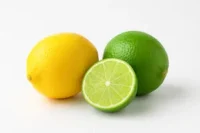How to Grow Green Onions with Expert Tips and Their Uses
Published: 29 May 2024
Growing green onions is a rewarding experience for many gardeners. In this comprehensive guide, I’ll share my expertise in growing green onions and provide you with the tips and tricks that have helped me succeed in cultivating these versatile, flavorful plants right in my backyard.
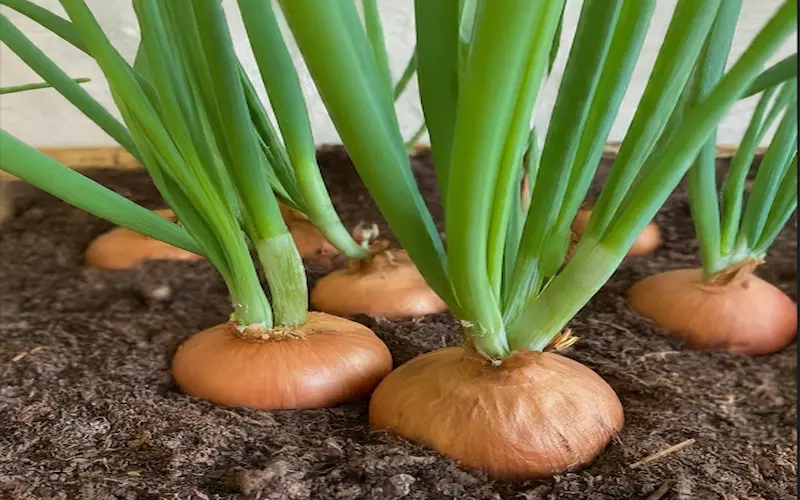
Introduction
They are also known as scallions or spring onions. They are a flavorful addition to any garden, require little space, and are easy to grow.
They can be swift from planting to harvesting, making them an excellent choice for novice and experienced gardeners. They thrive in a variety of climates.
They are harvested before the bulb can swell and mature. This early harvest yields a milder flavor and a more tender texture, perfect for various culinary uses.
When to Plant
When considering how to grow green onions, timing is an essential factor. They are cool-season vegetables and can tolerate temperatures that would hinder the growth of other plants. The best time to plant them in my garden is early spring or fall.
In milder winter regions, you can plant them in late fall for a winter or early spring harvest. Starting seeds indoors or in a greenhouse can provide a head start if you live in an area with harsh winters.
How to Plant
They prefer well-drained soil rich in organic matter. Before planting, I like to use some compost to boost the plant’s nutrients. Plant the seeds about 1 inch apart and cover them lightly with soil. If you’re planting sets or transplants, give them more space—about 2 inches apart should do.
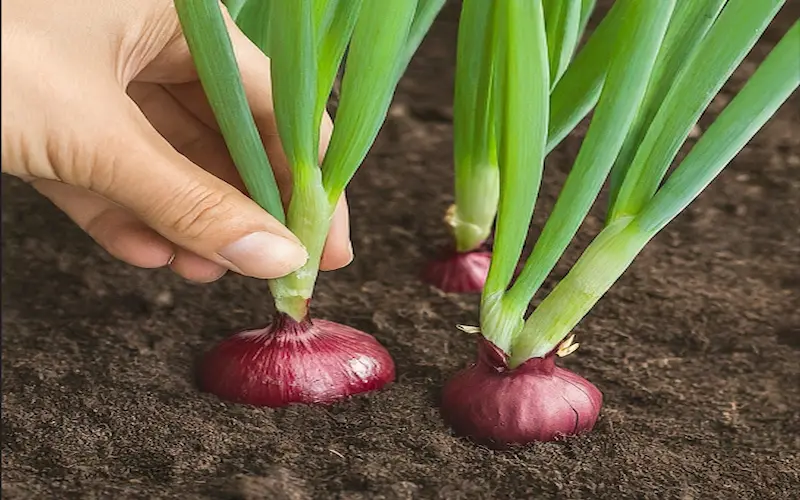
Step-by-step guide to growing green onions
It is a straightforward process. Here’s a step-by-step guide based on my own gardening experience:
- 1. Choose a suitable location: They prefer full sun but can tolerate partial shade. Find a spot in your garden that meets these conditions for the best results.
- 2. Prepare the soil: Till the soil to a depth of about 8-10 inches and mix in compost or aged manure. This will improve soil fertility and drainage.
- 3. Plant the seeds, sets, or scraps: If starting from seeds, sow them directly into the soil, lightly covering them with soil. Plant sets or scraps at a depth where the white part is below the soil surface.
- 4. Water consistently: Keep the soil moist but not waterlogged. They need water to thrive, but too much can cause root rot.
- 5. Fertilize moderately: A few weeks after planting, apply a balanced, all-purpose fertilizer to encourage vigorous growth.
- 6. Thin if necessary: If you’ve sown seeds and they’ve come up densely, thin them out to give each plant enough space to grow.
- 7. Weed and mulch: Keep the area around the plant free of weeds. Mulching can help retain moisture and suppress weed growth.
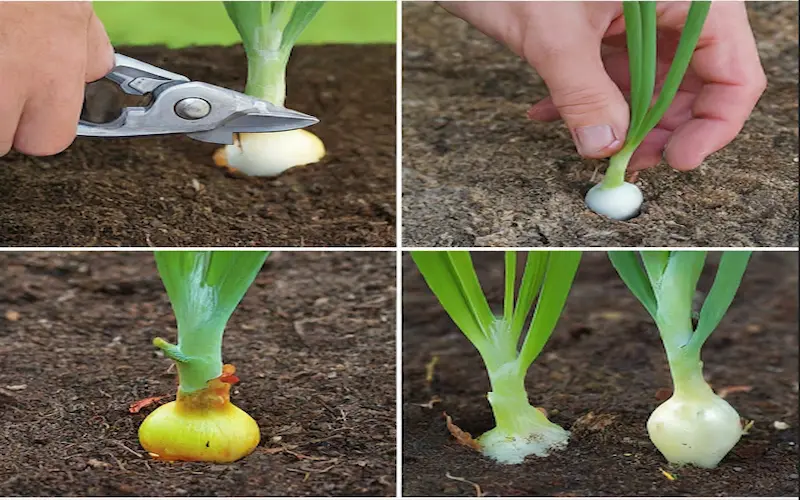
Essential tips for successful green onion cultivation
Over the years, I’ve compiled a list of tips that have been instrumental in my success. Here are a few key points to keep in mind:
· Consistency is key: Whether it’s watering, weeding, or monitoring for pests, consistent care will ensure the health and productivity of your green onions.
· Don’t over-fertilize: They don’t need much to grow well. Too much fertilizer can lead to excessive green growth at the expense of the root system.
· Pay attention to companion planting: They grow well with most vegetables, but they are perfect companions for carrots, beets, and tomatoes, as they can help repel pests.
Common problems and solutions
Like any plant, green onions can encounter problems. One common issue is bolting, where the plant starts to flower and seed prematurely. This typically happens when there’s a sudden change in temperature, especially in the spring. If you notice bolting, it’s best to harvest them immediately, as the flavor can become more intense and less desirable.
Another issue can be root rot, which is often the result of too much moisture. Ensure that your soil is well-draining and that you’re not overwatering. If you’re growing them in containers, ensure adequate drainage holes.
Pests can also pose a threat, though green onions are relatively resistant. Appropriate organic pest control methods can be effective if you encounter pests like onion maggots or thrips. As a preventative measure, practicing crop rotation is beneficial.
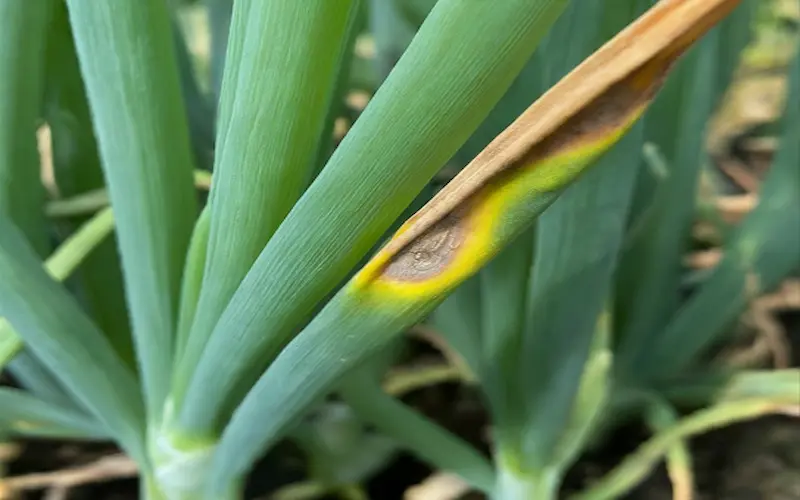
Harvesting and storing
Harvesting is one of the most satisfying parts of the growing process. You can begin harvesting when the plants are about 6 inches tall, and the stems are just starting to thicken. Pull them up from the soil, or snip them at the base with scissors if you’re harvesting from a pot.
They can be stored in the refrigerator for up to a week. I like wrapping them in a damp paper towel and storing them in a plastic bag. You can chop and freeze them for more extended storage, though this may affect their texture.
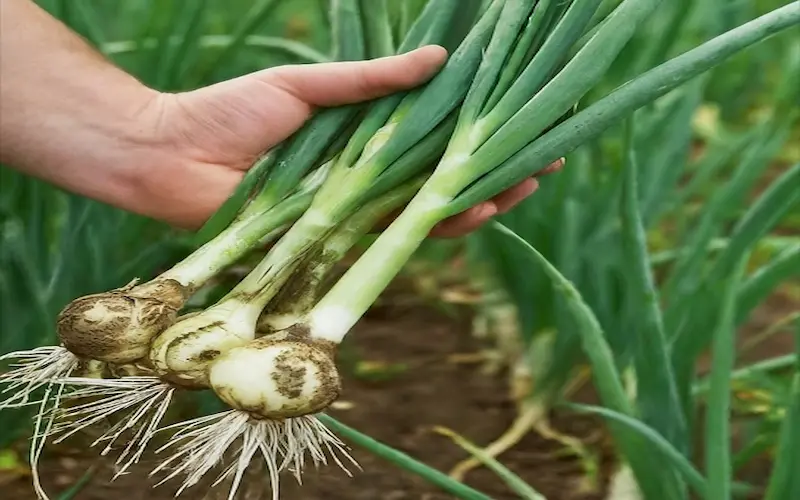
Creative Uses for Green Onions in Recipes
They add a fresh, zesty flavor to a variety of dishes. They are fantastic in salads, soups, and stir-fries. One of my favorite ways to use them is as a garnish, finely chopped over tacos or baked potatoes.
They also stand out in many Asian dishes, such as scallion pancakes or as a part of the aromatic base for fried rice. The white and green parts can be used differently: the white for more intense onion flavor and cooking into dishes, and the green for a milder taste and as a garnish.
Experimenting with green onions in your recipes can lead to some delicious discoveries. Their kitchen versatility is another reason why growing them at home is worthwhile.
Conclusion:
Growing green onions at home is a delightful endeavor that offers many benefits. From the rich flavor of freshly harvested scallions to the satisfaction of growing your food, the process is both enjoyable and rewarding. I encourage you to use this guide as a starting point for your own green onion gardening journey.
Remember these tips if you’ve found this guide helpful and are ready to start your green onion garden. Don’t hesitate to experiment and learn from your own experience.

- Be Respectful
- Stay Relevant
- Stay Positive
- True Feedback
- Encourage Discussion
- Avoid Spamming
- No Fake News
- Don't Copy-Paste
- No Personal Attacks



- Be Respectful
- Stay Relevant
- Stay Positive
- True Feedback
- Encourage Discussion
- Avoid Spamming
- No Fake News
- Don't Copy-Paste
- No Personal Attacks


